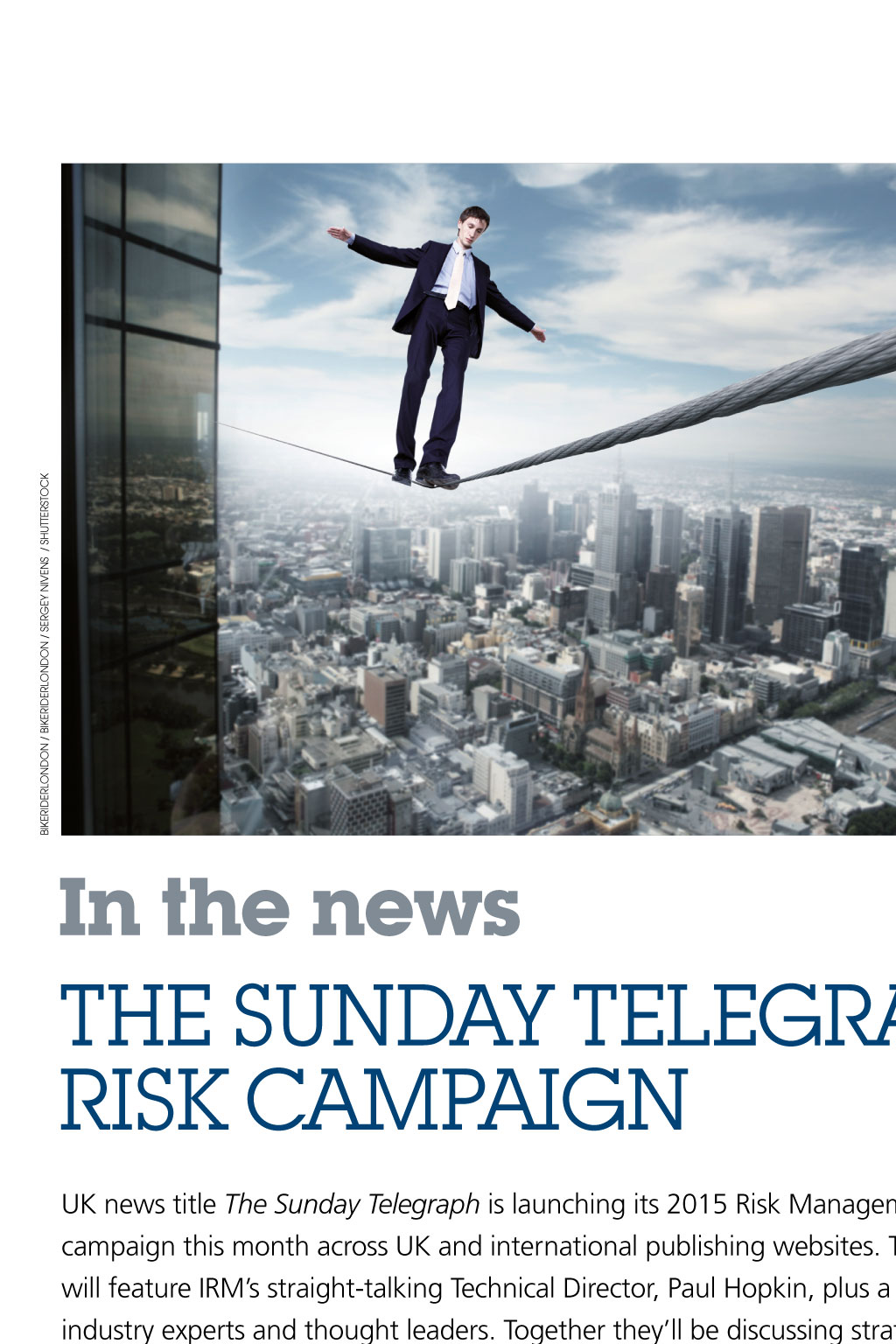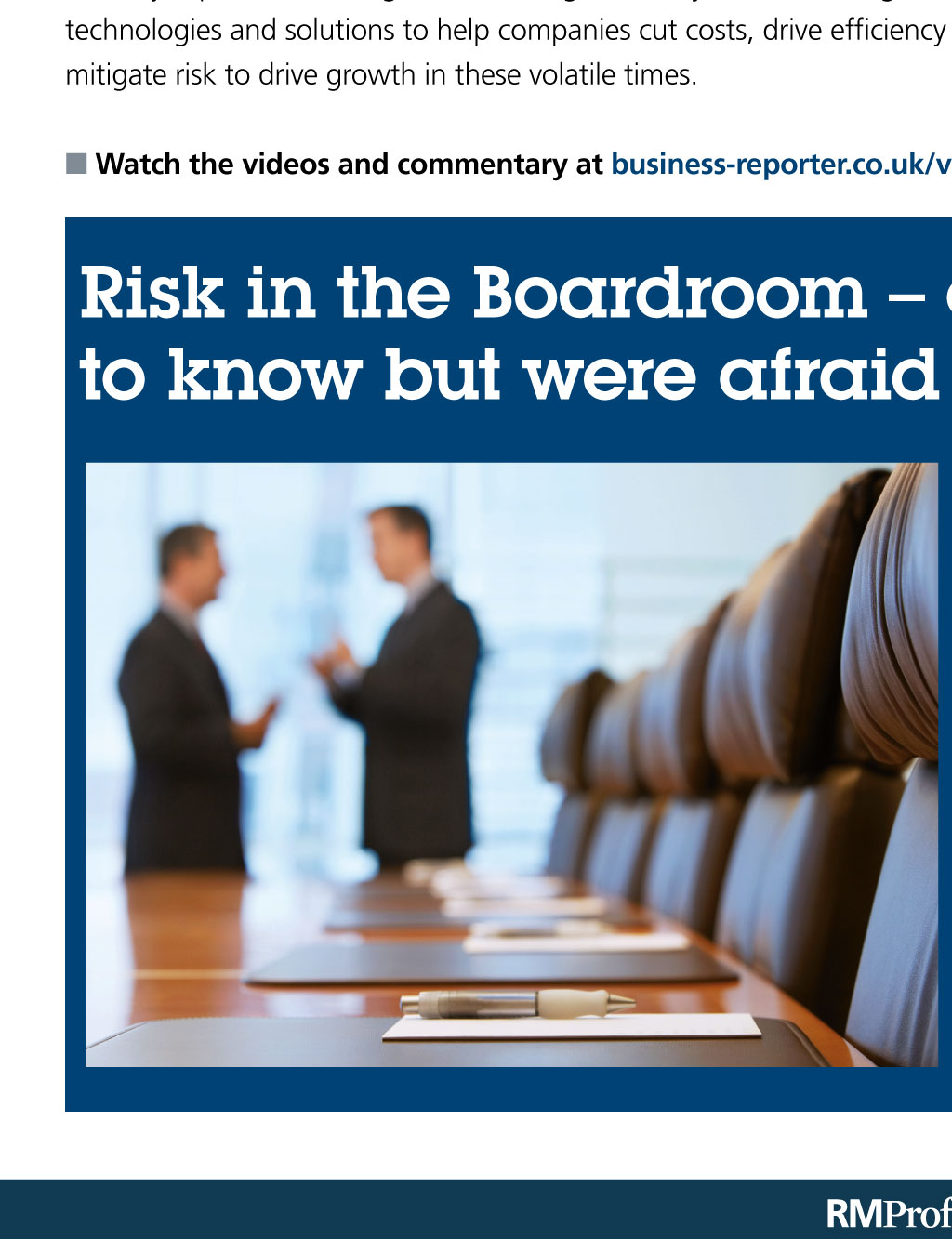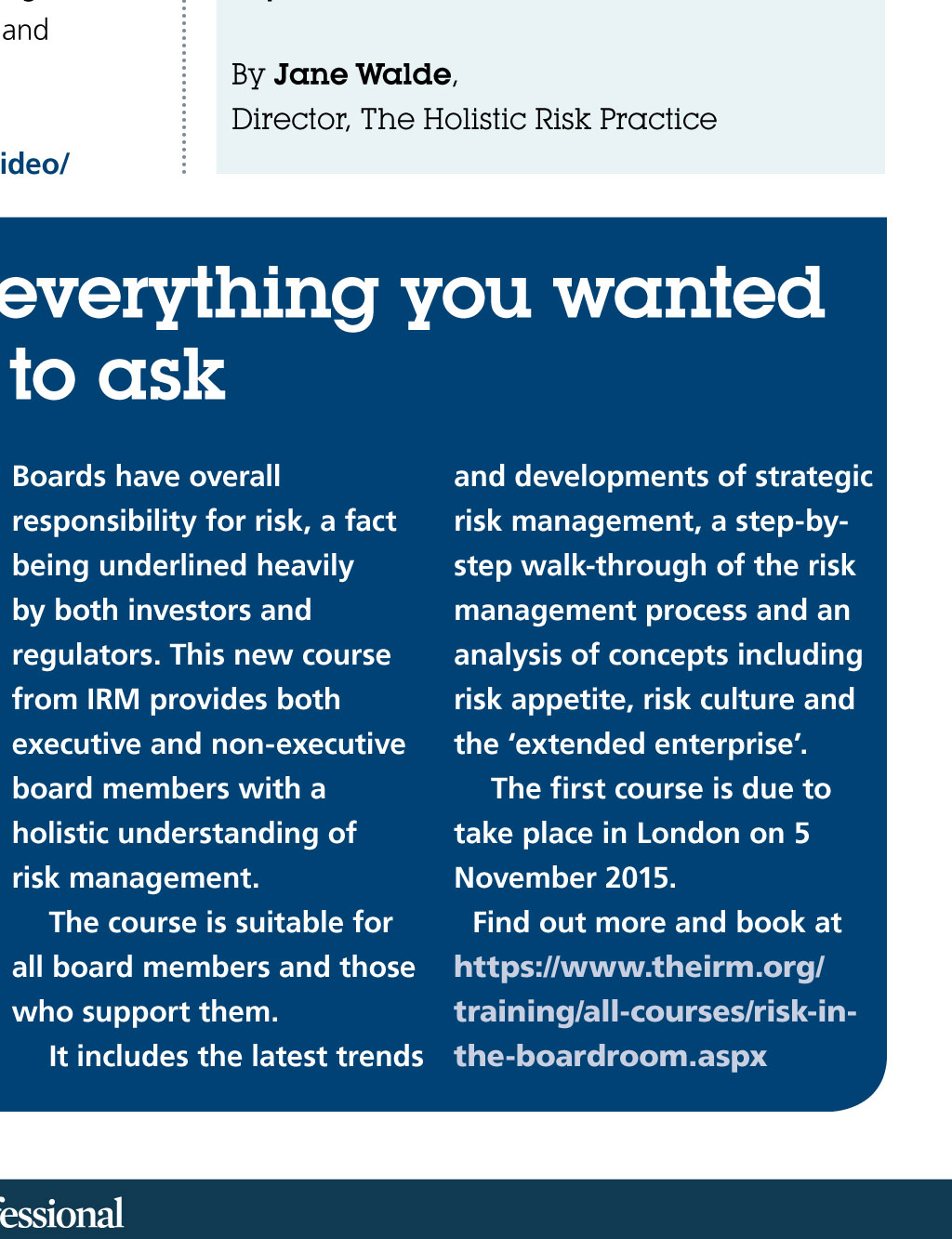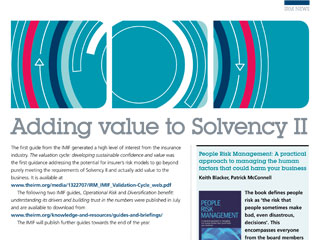












IRM News Adding value to Solvency II biKeriderlondon / biKeriderlondon / sergey niVens / shutterstocK The first guide from the IMIF generated a high level of interest from the insurance industry. The valuation cycle: developing sustainable confidence and value was the first guidance addressing the potential for insurers risk models to go beyond purely meeting the requirements of Solvency II and actually add value to the business. It is available at www.theirm.org/media/1322707/IRM_IMIf_validation-Cycle_web.pdf The following two IMIF guides, Operational Risk and Diversification benefit: understanding its drivers and building trust in the numbers were published in July and are available to download from www.theirm.org/knowledge-and-resources/guides-and-briefings/ The IMIF will publish further guides towards the end of the year. In the news The sunday TeLegRaph RIsk CampaIgn UK news titleThe Sunday Telegraphis launching its 2015 Risk Management video campaignthis month across UK and international publishing websites. The videos will feature IRMs straight-talking Technical Director, Paul Hopkin, plus a host of industry experts and thought leaders. Together theyll be discussing strategies, technologies and solutions to help companies cut costs, drive efficiency and mitigate risk to drive growth in these volatile times. n Watch the videos and commentary at business-reporter.co.uk/video/ People Risk Management: A practical approach to managing the human factors that could harm your business keith Blacker, Patrick McConnell The book defines people risk as the risk that people sometimes make bad, even disastrous, decisions. This encompasses everyone from the board members to the operations. There is a useful section on boardroom dynamics that leaves the reader with the impression that this is by far the most significant area for people risk within an organisation. The authors emphasise that managing people risk is complex, and they aim to provide a practical approach to mitigating these risks. They draw on a wealth of research in human behaviour and include some thought-provoking ideas. for example, research shows that we are hardwired to be optimistic and do not enjoy thinking about negative outcomes, which perhaps explains why the risk management discipline so frequently pushes beyond the comfort zone. They examine human bias in decisionmaking, and armedwith this knowledge, the experienced risk manager will find this book useful. Some of the suggestions, particularly the very comprehensive checklists for using pre-and post decision-making may be challenging to implement in practice. They outline a people risk management framework and suggest that HR should be in overall charge across the entire organisation. Clearly HR should be working with the risk management function to ensure that people risk is recognised and mitigated effectively but I believe oversight should sit with a more impartial function. by Jane Walde, director, The holistic Risk practice Risk in the Boardroom everything you wanted to know but were afraid to ask Boards have overall responsibility for risk, a fact being underlined heavily by both investors and regulators. This new course from IRM provides both executive and non-executive board members with a holistic understanding of risk management. The course is suitable for all board members and those who support them. It includes the latest trends and developments of strategic risk management, a step-bystep walk-through of the risk management process and an analysis of concepts including risk appetite, risk culture and the extended enterprise. The first course is due to take place in London on 5 november 2015. find out more and book at https://www.theirm.org/ training/all-courses/risk-inthe-boardroom.aspx